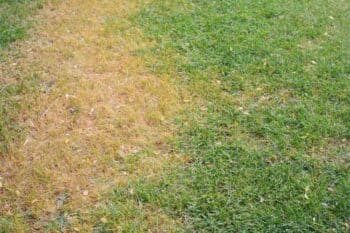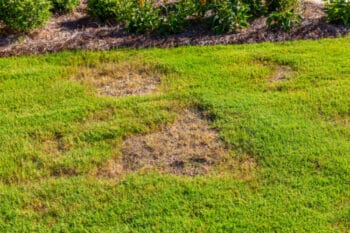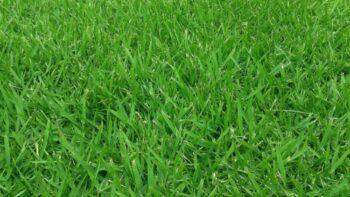
Understanding zoysia patch disease is important to those homeowners who have zoysia turf.
Zoysia patch is a common fungal disease that affects zoysia grass. It can create large patches of dead or dying grass in affected areas.
This disease has been known to spread quickly. In this article, we’ll discuss what zoysia patch disease is and everything you need to know about it.
What Is Zoysia Patch Disease?
Zoysia patch disease is caused by the fungus Rhizoctonia solani. This fungus tends to thrive in cool temperatures with high humidity levels. It can cause serious damage to your lawn if not treated effectively.
The primary symptom of this disease is large patches of dead or dying grass in affected areas. As the name suggests, these patches tend to resemble a large “patch.” The patches may be anywhere from one square foot up to several feet across.

What Does Zoysia Patch Look Like?
The primary symptoms of the zoysia patch include yellow or orange-browning patches of grass. The patches are surrounded by healthy green blades. These patches are usually dry and have a rough texture due to their dead or dying nature.
If left untreated for long enough, these patches can become larger and more numerous until the entire lawn may become affected. When the patches appear “sunken in,” serious damage has occurred.
What Causes It?
The main cause of the zoysia patch is an excess amount of moisture combined with warm temperatures and high humidity levels. This creates ideal conditions for the Rhizoctonia solani fungus to thrive quickly and spread. Spring and fall are the seasons most affected by zoysia patch. Although it can survive in summer as well.
Other factors, such as poor soil drainage, compacted soil, excessive shade, and thick thatch will also contribute to its growth. Additionally, any existing injuries on the turfgrass can make it more susceptible to infection from this fungus. Keeping up with a consistent lawn mowing routine will help you lawn stay healthy and dense. Contact us today for details about our lawn mowing service.
How Do You Treat Zoysia Patch?
The best way to treat zoysia patch is through preventitive methods. These include, maintaining proper mowing heights, efficient irrigation practices, fertilization, aeration, and overseeding/sodding.
Additionally, it would be best if you kept an eye out for any signs of infection, so you can take action quickly if necessary. Chemical treatments may also be needed, depending on the severity of the infection.
Other Things To Think About
When treating zoysia patch disease, it’s important to remember that prevention is key. Make sure you follow proper mowing heights and irrigation practices, so your lawn doesn’t become too wet or dry. Both extremes can lead to an increased risk of infection from this fungus.
Furthermore, keep an eye out for any signs of infection. Doing so will allow you to take action quickly. This also ensures you don’t end up having to install new sod pallets due to damage. Sodding does get costly.
Finally, use chemical treatments as a last resort. They will do more harm than good if used improperly or excessively. Please consult a professional before using them on your own property.

Wrapping up understanding zoysia patch disease
Overall, understanding how the zoysia patch works is essential if you want to protect your lawn from this damaging disease.
By following proper mowing heights and irrigation practices combined with regular aeration and fertilization schedules, you will drastically reduce the chances of this fungus infecting your lawn.
Additionally, keeping an eye out for early signs of infection. Take action quickly. Or you will need to have new sod installed. For information about sod installation in Fort Worth, check out our services page. All these points will help ensure that you maintain a beautiful, healthy lawn free from zoysia path disease all year round.
